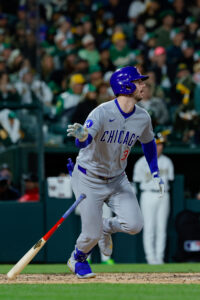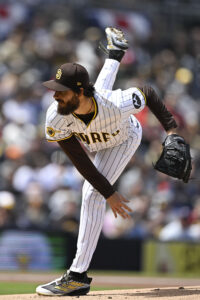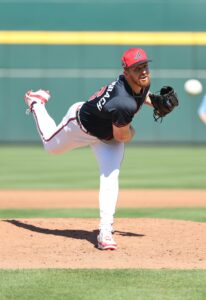While this year’s trade deadline is still more than three months away, there’s perhaps no more obvious trade candidate in the game right now than Marlins ace Sandy Alcantara. The 2022 NL Cy Young award winner, Alcantara missed last season due to Tommy John surgery but is back in action with Miami this year. While he was out of commission, the Marlins tore the roster that made the playoffs in 2023 down to the studs, trading everyone from Luis Arraez and Jazz Chisholm Jr. to Trevor Rogers and Jesus Luzardo. With no end in sight to the rebuild and Alcantara controlled through the 2027 season, it would be a complete shock if the Marlins held onto him until his contract came to a close.
Whenever the Marlins trade Alcantara, he’s sure to be an extremely sought-after commodity. The right-hander’s 4.70 ERA in three starts this year is far from impressive, but his peripherals have looked better. He’s generating grounders at a phenomenal 65.1% clip with a 3.86 FIP and a 3.91 xERA despite his lackluster 19% strikeout rate and 12.7% walk rate. Those strikeout and walk figures will become concerning if they hold up over a larger sample size, but unless that comes to pass, it seems fair to expect the righty to return to his previous dominant form. Since his full-season debut in 2019, Alcantara has posted a 3.33 ERA with a 3.71 FIP, a 51% grounder rate, and a 21.4% strikeout rate against a 7.1% walk rate.
Those numbers don’t hold a candle to his Cy Young season, where he posted a 2.28 ERA and 2.80 FIP in a campaign that led MLB with 8.0 bWAR, but it’s still clearly front-of-the-rotation caliber production overall. Perhaps even more enticing to teams than Alcantara’s rate production is his status as a true workhorse in a game where arms capable of pitching deep into games on a regular basis have become vanishingly rare. Alcantara hasn’t posted less than 184 2/3 innings in any of his four full seasons, and his 858 1/3 innings of work from 2019 to 2023 were second only to Gerrit Cole. That sort of volume would have value even if Alcantara was a league-average pitcher, given the increasing difficulty with which teams are forced to piece together their rotations.
He’s also appealing from a financial point of view. He is making $17MM this year and next year, less than half of what some other ace pitchers get. Then there’s a $2MM buyout on a $21MM club option for 2027.
Given his ace-level upside, workhorse reputation, years of control, and affordable contract, Alcantara’s status as one of the most valuable trade chips in the sport is unlikely to change. That gives the Marlins the ability to stay flexible with their plans regarding the prized righty. Reporters Will Sammon of The Athletic and Barry Jackson of the Miami Herald have suggested that the Marlins have not yet decided if they’ll trade Alcantara at all this season. Alcantara himself tells Jackson that he wants to stay in Miami but is aware that he has no say in the matter. “I’m [just] a player,” he said. “If they want to trade me for a bag, they can trade me.” While the righty eventually getting moved appears to be something of a fait accompli, the Fish would still have two full seasons of team control to market if they opted to move him this offseason instead.
Of course, teams will likely be willing to pay a higher premium for Alcantara at the deadline, when they’d have him available for three pennant races and he wouldn’t be competing with a free agent market rich in rotation talent like Dylan Cease, Zac Gallen, and Framber Valdez. Unless the 8-10 Marlins are able to make a surprise surge into contention for an NL Wild Card spot this summer or Alcantara’s performance declines enough that lucrative trade offers start to dry up, it’s hard to see the club getting more value out of their star by waiting for the offseason. With that said, another year of information regarding their prospects and young players could allow them to make more informed decisions about which areas of the roster to target improvements for in the return package.
Could the Marlins benefit from moving Alcantara even earlier, as they did with Arraez last May? Such a decision wouldn’t give Alcantara much of an opportunity to prove he’s healthy and back to his usual form, but the extra few months of starts could be very attractive to clubs like the Yankees, Cubs, and Padres that are dealing with injury woes in their rotation already. What’s more, it’s not impossible to imagine a team like the Astros (Valdez), Twins (Pablo Lopez), or Royals (Seth Lugo) that is currently attempting to compete winding up on the outside of the playoff picture come July and marketing their own top starters. That would give potential suitors for Alcantara alternative options they surely wouldn’t have available to them this early in the calendar.
When do MLBTR readers think the Marlins should start trying to trade Alcantara? Would jumping the market and opening up the bidding now allow them to maximize their asset, should they wait to see if Alcantara can re-establish himself more before putting him on the market this summer, or could waiting even longer to deal him this offseason be the best course to take? Have your say in the poll below:






